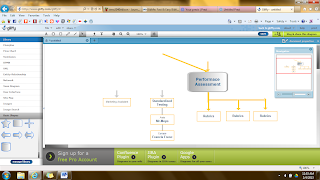Q: How can teachers evaluate and assess their students?
Types of assessment:
*Standards based assessment:
These begin with the curriculum that gives a framework of
expected outcomes for each grade level. Tests are then made to assess how a
student is doing working toward those goals.
Standardized Testing: These tests
are administered and scored in a standardized manner and can include multiple
choice, high-stakes, and time limited tests.
Standardized tests allow for an easy comparison of outcomes between test
takers. High-stakes tests currently play a major role in college admissions and
high school graduation. Since teachers are held accountable for their students
test scores, this type of test is given often.
Norm-referenced tests: These tests
rank students by grouping of age or grade level to show how a student s doing
in comparison to the norms of the larger group.
Criterion-referenced tests: These
tests compare a student’s performance to specific objectives or standards
instead of to other students as with norm-referenced tests.
This type of test uses assessment results which can guide the
teachers instructional practice. Assessments cam ne a mixture of teacher
observations and student work such as portfolios. This allows the teacher to
see different learning needs.
*Performance assessments:
These measure how a student does within the context of a
certain activity.
Student performance rubrics: These
can used in performance assessments to evaluate assignments and activities.
Rubrics give students a clear framework for evaluation and grading
Technology can be used to conduct standardized tests and for
performance assessments. Performance assessments can be used to evaluate PowerPoint
presentations for example.
Tech Tool:
Gliffy allows teachers to be better organized with its free diagraming
tools.
Teachers can create classroom floor plans and seating
charts. It also allows teachers to organize information into flow charts and Venn
diagrams for visual learners.
Gliffy provides a few pros like free use of most features,
it’s browser based, and collaborative. I
attempted to make a flowchart to illustrate my this blog post but found what
should have been a simple task to be time consuming and frustrating. In order
to make the flowchart look presentable, I had to mess with alignment way too
much. While pressing the undo button to put back an arrow I had moved, I
somehow ended up deleting half of my flowchart with no way to get it back.

Like any tool, I think Gliffy needs some time to learn its nuances...though it could just be inherent in the software, too. I've been there, but have some other favorites that I prefer. The opportunity to experiment and eliminate though can still be a good learning experience! :)
ReplyDelete